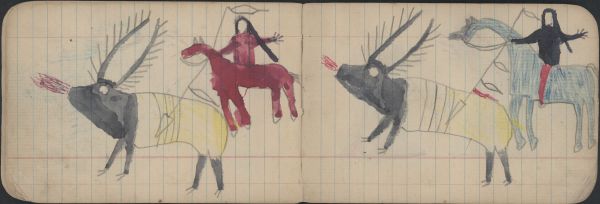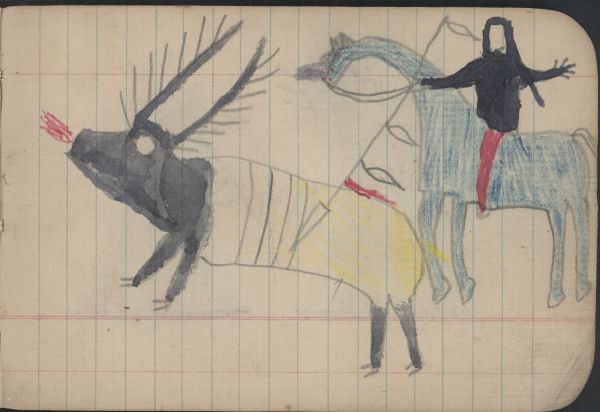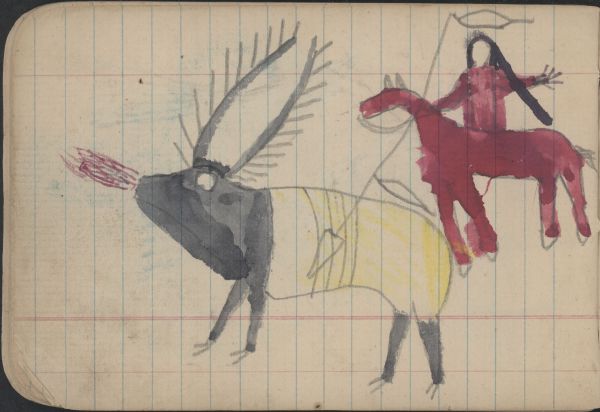HUNTING: Man on Blue Horse Lances Elk Bull; HUNTING: Man on Red Horse Lances Elk Bull
Ethnographic Notes
Right: Man on a blue horse kills a male elk with a lance. A hunter on a blue horse lances a large elk. The relatively large size of the elk and its placement in front of the horse suggests that the distance between the hunter and the elk is telescoped (Petersen, 1983: 271). The hunter has black hair in a crudely drawn braid, slightly extended (perhaps with motion), and outstretched arms. His left hand has fingers extended; his right hand holds the reins and lance. His face is unpainted. He wears a black shirt and red pants or leggings, with one leg showing against the side of the blue horse. He carries a lance with large point on the tip, and three feathers. The point resembles a metal-tipped Cheyenne lance in the Colorado Historical Society collection (Afton, Halaas et al., 1997: 17). Benson Lanford notes the use of metal for lance points: “Indians converted knife blades into lance points, or made them from barrel hoops, broken frying bans, and assorted scrap metal” (2003: 190). The X-ray view shows the lance penetrating the animal, with red flowing from the point of entry. The elk has four bands around its yellow torso, suggesting ribs; black nape, head, and legs; and a large rack of horns. Its split hooves are drawn. The elk discharges blood from its mouth, an indication of mortal wounds in ledger art. Left: Man on a red horse kills a male elk with a lance. This drawing closely resembles the one on the facing page. The lance also appears to be very similar, with a similar blade tip but only two feathers. The difference in size between the elk and the smaller horse emphasizes even more clearly the distance. The man has black hair down his right shoulder, either loose or in a crudely drawn braid. His left hand is outstretched with fingers extended; his right hand holds the reins and lance. He wears a red shirt, but no legs can be seen against the horse. Perhaps a line behind the horse’s torso indicates the man’s leg. The horse seems to stand still while the rider makes his thrust, as the legs are straight and not extended. The artist draws pricked ears. The elk is almost double the size of the man and horse. It is yellow, with four bands around its middle, yellow crayon fill, and lack legs, nape, and head. It has a large rack of horns. It is almost identical to the elk on the previous page. It discharges blood from its mouth, to indicate the wound is mortal. Media: Lead pencil, black ink, blue and yellow crayon, red watercolor


